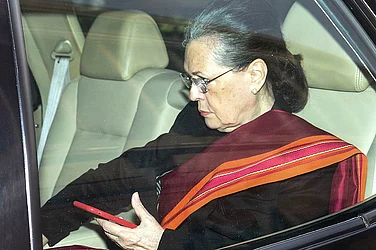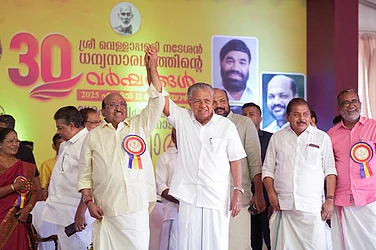| Sedition | UAPA | |
| Section 124A, Indian Penal Code, 1860: “Whoever, by words, either spoken or written, or by signs, or by visible representation, or otherwise, brings or attempts to bring into hatred or contempt, or excites or attempts to excite disaffection towards the government established by law in India.” Punishment: Fine, or imprisonment of three years to life. Shall be punished with 104 (imprisonment for life), to which fine may be added, or with imprisonment which may extend to three years, to which fine may be added, or with fine. Exception: Criticism, to be determined by the judiciary | Unlawful Activities Prevention Act, 1967: Following a constitutional amendment, UAPA was enacted to “impose, by law, reasonable restrictions in the interests of the sovereignty and integrity of India, on the (i) freedom of speech and expression (ii) right to assemble peaceably and without arms and (iii) right to form associations or unions” Punishment: Penalties ranging from five years to life imprisonment along with fines. If the offence leads to loss of life, a death sentence can be awarded. Unlawful associations: Secessionist and terrorist associations; to be determined and notified by ministry of home affairs | |
***
Behind every man who has been labelled ‘seditious’ by the State is a law that goes back 155 years. Section 124A of the Indian Penal Code dates to 1860, three years after the British were rattled by what came to be known as the Sepoy Mutiny. There is also the Unlawful Activities Prevention Act, a handy tool to silence ‘dangerous’ people with ‘dangerous’ ideas. Why, a week before it was held unconstitutional, Samajwadi Party leader and UP cabinet minister Azam Khan used Section 66A of the Information Technology Act to penalise a Class 11 student in Rampur, Uttar Pradesh.
The police are arbitrary and indiscriminate in the use of the sedition law, arresting people even for activities like singing, acting in street plays, reciting poems, painting graffiti on walls, not standing up during the national anthem or for cheering the Pakistani cricket team. These have, of course, usually accompanied the more serious charges of sympathising, funding or acting with Maoists or suspected terror organisations.

Piyush Sethia, 39
Environmentalist and human rights activist, Salem, Tamil Nadu
On Republic Day 2010, Sethia went to then Union home minister P. Chidambaram’s home constituency in Tamil Nadu to protest against human rights violations under Operation Green Hunt. “Stop the hunt of Indians for corporates,” read the legend on his T-shirt. But before he could start distributing pamphlets in Tamil Nadu for a cycle yatra, the policemen took a look at the pamphlet, consulted their seniors and whisked him away. Around 12 hours later, he was produced before a magistrate and sent to jail on sedition charges, before the Madras High Court ordered him to be released on bail after 23 days.
Status: Five years on, the chargesheet is yet to be filed in a case in which the police had opposed bail and sought an extended remand.
Nobody knows the exact number of people who stand charged under these laws, but anecdotal evidence puts their number in thousands, many of them faceless tribals hauled up for allegedly sheltering Maoists, feeding them or having been seen in the company of rebels, a reality Jairam Ramesh acknowledged when he was Union minister for rural development.
The police get away by saying they had intelligence inputs, secret reports or confessional statements. The judiciary fails to question the police or even grant bail in cases where detention serves no purpose other than breaking an individual’s spirit or ruining a family. In case after case, the prosecution fails to prove the charges, leading eventually to acquittals.
In the landmark 1962 judgement in Kedar Nath Singh vs State of Bihar, even though the Supreme Court had held the sedition law as constitutionally valid because the speech in question had incited people to violent action and was not just criticism of the government, but had directed that evidence of either violence or an incitement to violence against the state is necessary for detention. As recently as March 18, the Bombay High Court, while deciding a PIL against cartoonist Aseem Trivedi’s arrest in 2012, upheld the sedition law, but said guidelines were necessary for arrests.
Yet this is routinely disregarded, with SPs, and deputy SPs and magistrates deciding what amounts to sedition. At a convention of the People’s Union for Civil Liberties in 2012, former Delhi High Court chief justice Rajinder Sachar had quipped that even he could have been booked for sedition for talking to suspected Maoists or terrorists!
But while the United Kingdom repealed the law in 2010 after having tried the last case of sedition way back in 1972, in India the government is unlikely—and possibly unwilling—to repeal such laws. Have they reduced threats to India? The jury is still out. Meanwhile countless individuals are paying a price for something they have not done.

Photograph by S. Mukherjee
Sangram Mohanty, 34
Businessman and political activist, Brahmapur, Orissa
Described as a dreaded Maoist who regularly met Maoist leaders and discussed how to overthrow the government and plan bombings etc, police relied on villagers who had overheard conversations about secret meetings while collecting wood. These alleged meetings would then be linked to incidents like the ‘IEDs found based on secret information’ and implicate Mohanty. Rape and molestation cases were also filed against him .
Status: Mohanty stepped out of jail a day after R-Day this year, having spent three years in jail and granted bail by the Supreme Court, which the high court had denied. This despite villagers denying giving statements to the police implicating him and after the alleged rape victim refused medical examination. But while the Orissa police had filed an affidavit before the apex court declaring there were no more cases against him, Mohanty was arrested outside the jail and booked in two more cases. The SC, in a rare gesture, intervened again and granted him bail a second time.
***
In the national award-winning film Court, you could be forgiven for thinking that the central character—the ageing activist Narayan Tamble, charged with inciting war and hatred against the nation—is a figment of a very vivid imagination. But Tamble could well be Sudhir Dhawale, the Dalit rights cultural activist arrested at a seminar on atrocities on Dalits; Sangram and Dandapani Mohanty, arrested and rearrested despite Supreme Court bail orders; Piyush Sethia, who wore his opposition on his tee. Or G.N. Saibaba, whose plight Arundhati Roy has evocatively outlined in the preceding pages.
The case against Dhawale was built on the alleged confession of another activist (see box). He was expecting it, says Dhawale, he knew his activism was hurting several political parties. He was also campaigning against a village-level dispute resolution scheme called the Mahatma Gandhi Tanta Mukti Abhiyan. It was being run by upper-caste Hindus, he claims, and it was them he antagonised and paid for with three years in jail. And while the court did not find any evidence to hold him guilty, police officers who built up the case against him got away without so much as a showcause!
Dhawale does not deny his faith in the Marxist-Leninist-Maoist ideology. He had worked as a cultural activist with Vidyarthi Pragati Sangathana and Ahwan Natya Manch from 1985 to 1994, organisations the police views as fronts for the erstwhile CPI-ml. When these organisations disappeared from Nagpur, Dhawale took to mainstream activism and continued to work on caste-based atrocities and Dalit rights.
The Maharasthra police claimed to have arrested Dhawale with ‘Naxal literature’ despite the apex court verdict in the Binayak Sen case saying carrying Maoist literature didn’t mean the person practised the principles. The sedition charge ensured he was denied bail. “I was able to secure an acquittal with the help and support of many people,” he told Outlook. “But I’ve seen several inmates, especially tribals, in jail on similar charges. They are too poor to fight the state’s might.” Dhawale’s lawyer Surendra Gadling—who’s now representing Dr Saibaba—cites the example of a tribal woman who was recently granted bail but whose family was so poor they could not come to get her, and she could not afford to go back.
***
Inside the warden’s residence at Gwyer Hall in Delhi University’s sprawling and leafy north campus, Vasantha, Dr Saibaba’s wife, shuttles between the kitchen brewing tea and showing documents from a growing pile and checking on her daughter in the next room. In the yard outside, a scooter, with extra wheels to ensure balance for the physically disabled, gathers dust. Books on Marx, Lenin, Stalin, Mao, other Left thinkers and academics line the bookshelves in the drawing room.
A government communique classified ‘secret’ suggests Dr Saibaba had been recruiting academicians, doctors and others to become part of Maoist frontal organisations to raise funds and procure weapons for an armed revolution.
The police claim to have found frequent communication between one Prakash and Maoist leaders. Saibaba, they say in the chargesheet, was Prakash. None of the letters is handwritten or signed nor did any neutral witness attest that the police found them at Dr Saibaba’s residence during the raid.
The only ‘genuine’ letter the police produced, says Vasantha, is one in which her husband and several other intellectuals had appealed to Maoist leader ‘Azad’ to engage in peace talks with then Union home minister P. Chidambaram. (The negotiations never took place because Azad was shot dead en route to the peace talks). Today, the family faces an uncertain future. Vasantha inquires how she can raise funds. She is now part of a group called Women in Conflict, because the government has brought the conflict out of the heavy-forested areas of Central India to their home in DU.
***

Photograph by Amit Haralkar
Sudhir Dhawale, 46
Activist against atrocities on Dalits, Byculla, Mumbai
In 2011, Dhawale was attending a rally against atrocities on Dalits when the police picked him up. Booked under UAPA, police told the court that Dhawale was a ‘card-carrying Maoist’. Other arrested activists had made incriminating statements against him, Maoist literature was found on him at the time of arrest, the police claimed. They opposed his pleas for bail, and the courts denied it.
Status: Activists denied before the court that they had ever ‘confessed’ or identified Dhawale as a Maoist. Prosecution failed to prove that Dhawale was a member of the banned organisation, participated in any terrorist activities and the Maoist literature was found to be available online. Acquitted after three years in jail.
Barely five days after he had joined the Odisha Jana Morcha (OJM), the party floated by chief minister Naveen Patnaik’s advisor-turned-rival Pyarimohan Mohapatra, plainclothes policemen whisked away Sangram Keshari Mohanty, an engineer-cum-lawyer-turned-businessman on December 5, 2012. A vehicle without a number plate had sidled up to his motorbike while he was on his way to a garage to get a truck repaired. His family learned of his arrest after local TV channels beamed the police claiming to have nabbed “a Maoist courier and supplier” with “dry fruits, dry fish and Naxal literature” on him. His father, Dandapani Mohanty, an ex-revolutionary, had been the interlocutor between the state government and the Maoists following the abduction of IAS officer Vineel Krishna, bjd legislator Jhina Hikaka and two Italian tourists. “My son has never been part of any radical left movement,” he had told this correspondent then, sitting at home, the wall in front showcasing Lenin, Marx, other left-wing thinkers and Bhagat Singh. The senior Mohanty was arrested two months later when he went on a hunger strike for his son’s cause.
***
In 2008, the Gujarat edition of the Times of India was sued twice for sedition. Sociologist Ashis Nandy was charged first for a column on the post-Godhra turmoil in Gujarat. Later, a reporter from the newspaper was charged for questioning the appointment of O.P. Mathur as the police chief of the state capital, highlighting his links with the underworld. Another story allegedly suggested how the post was a reward by the Gujarat government for Mathur botching up the probe as investigator into Sohrabuddin Sheikh’s fake encounter.
It was left to the Gujarat High Court to hold that the articles were not seditious, based on an earlier apex court ruling that an individual public servant (in this case the police chief) could not be confused with the state. Calling the charge absurd, the judge said, “...then every argument/comment against the manner and functioning of the government might be alleged to lead to the hatred of the government, and it might be suggested that such comments brought the government into hatred or contempt.” And you still say we need an 1860 law in 2015?


























